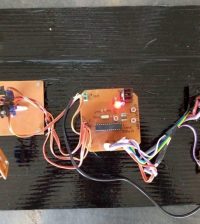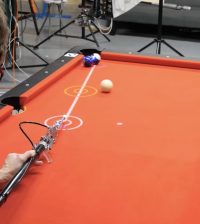- How to Adjust X and Y Axis Scale in Arduino Serial Plotter (No Extra Software Needed)Posted 2 months ago
- Elettronici Entusiasti: Inspiring Makers at Maker Faire Rome 2024Posted 2 months ago
- makeITcircular 2024 content launched – Part of Maker Faire Rome 2024Posted 4 months ago
- Application For Maker Faire Rome 2024: Deadline June 20thPosted 6 months ago
- Building a 3D Digital Clock with ArduinoPosted 10 months ago
- Creating a controller for Minecraft with realistic body movements using ArduinoPosted 11 months ago
- Snowflake with ArduinoPosted 11 months ago
- Holographic Christmas TreePosted 12 months ago
- Segstick: Build Your Own Self-Balancing Vehicle in Just 2 Days with ArduinoPosted 12 months ago
- ZSWatch: An Open-Source Smartwatch Project Based on the Zephyr Operating SystemPosted 1 year ago
JohnsHopkins and Darpa are working to Revolutionary Prosthetics: bionic hand offering a Sense of Touch
Johns Hopkins University and its Applied Physics Lab is successfully working to an amazing program to give back the sense of touch to people using prosthetics. The new discoveries are part of Darpa Revolutionary Prostethics programme that is financing R&D departments all over the world, like the italian IIT that also released an advanced bionic hand.
When DARPA launched the Revolutionizing Prosthetics program in 2006, the state of upper-limb prosthetic technology was far behind lower-limb technology. Advancing upper-limb technology was judged to be a more difficult medical and engineering challenge.
After six years of development, the Revolutionizing Prosthetics program developed two anthropomorphic advanced modular prototype prosthetic arm systems, including sockets, which offer increased range of motion, dexterity and control options.
Thirty-five volunteer amputees participated in a Department of Veterans Affairs (VA) funded optimization study in VA and DoD medical centers and provided design feedback for the development of the Gen-3 Arm System by DEKA Integrated Solutions Corporation, one of two primary performers on the Revolutionizing Prosthetics program. Based on that testing and subsequent refinement, DEKA submitted a 510(k) premarket notification to the FDA in April 2012 seeking approval to make the Arm System commercially available.
DARPA researchers have also attained promising initial results on achieving brain control of an advanced arm system developed by the Johns Hopkins University Applied Physics Lab, the second primary performer on Revolutionizing Prosthetics. This work with tetraplegic volunteers has demonstrated the potential to use advanced prostheses to improve the quality of life for victims of paralysis.
The Revolutionizing Prosthetics program is ongoing and aims to continue increasing functionality of the DARPA arm systems so servicemembers with arm loss may one day have the option of choosing to return to duty. Additionally, the dexterous hand capabilities developed under the program have already been applied to small robotic systems used in manipulating unexploded ordnance, thus keeping soldiers out of situations that have led to limb loss.
















